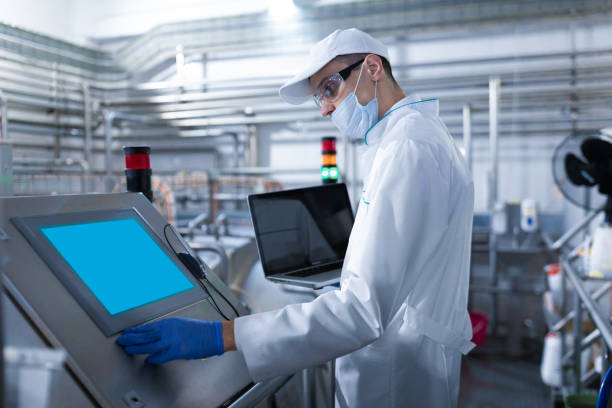Environment-controlled rooms (or clean rooms) are designed to help you protect the things that are important to your business. This can be for any use, including research requiring live samples, growing plants, or even keeping important items in a secure, climate-controlled archive.
These specifically designed rooms are used in all industries, such as manufacturing, morgues, museums, research labs, and specialty agriculture.
Environment-controlled rooms come in varying sizes and purposes. They are used, for example, for walk-in cold rooms and freezers, large open-plan rooms with specialized storage, equipment stations, and consoles.
They have the ability to control all aspects of the environment within, from temperature regulation and humidity control to airflow and air filtration systems. Thus, whatever you do in the environment-controlled rooms will be kept in a permanently stable state.
How does an environment control room work?
When creating the required environment, there are certain criteria that need to be met. These are all factors that you will be able to manipulate should the requirements of the room change, so you stay in control at all times.
These are aspects that will have an effect on the contents of the room, and any deviation from the requirements could prove to be disastrous. So, giving you full control means that you can make any adjustments, big or small, including the following:
- Light Intensity: This is vital for things like grow rooms, where you are producing light-sensitive plants, or working with historical documents that have been sealed for a long time, meaning that a light source that is too bright could damage them. Being able to adjust the light, and even the type of light used, will have a big impact.
- Temperature: Some things need to be kept colder than others, while some things need to be hotter. This is especially important when operating for services such as lab research, mortuaries, or grow houses.
- Pressure: Most people are unaware that the air pressure within an environment can affect its contents. Negative and positive air pressure rooms are required for different situations. Positive pressure rooms are great for keeping the room sterile and preventing contact with bacteria and viruses. On the other hand, negative pressure keeps harmful conditions confined to one space, preventing their spread.
- Humidity: Being able to control the humidity in the room can be the difference between mould growing in unwanted, wet, or damp places and documents or plants drying out, thus failing to grow properly and disintegrating.
- Oxygen and carbon dioxide levels: Too much or too little of either can be hazardous, not only to the items in the room but to the people working within them too. While oxygen helps to promote focus and productivity, carbon dioxide levels that are too high can cause drowsiness and lethargy.
How Environmental Control Rooms Can Help Increase Productivity
Aside from the actual environment controls being at your fingertips, controlled environment rooms can be customized to meet the needs of nearly any industry.
Particularly important for research labs, operating with live specimens. Researchers can create the perfect environment to study their test subjects and collect accurate results by being able to control all environmental factors. This can help scientists uncover new data and insights much faster than they would be able to in the field.
Growers can easily increase crop production, run cross-breeding or selective-breeding experiments to create new crops, or test soils, tools and other elements to optimize their production and inform other growers of their insights.
Some organizations can use environmental control rooms to help monitor and disinfect people or equipment coming in or out of a facility, which helps keep staff safe and able to work without risk to their personal safety.
Manufacturers can test new designs and models much more effectively and under a larger range of conditions. This decreases development time significantly, which helps the brand bring new products or services to market faster.
The rooms can also be monitored remotely or left unattended. With constant recording and monitoring, the rooms remain at the required environmental settings while making necessary adjustments without you having to be on-site 24/7. This creates an ideal environment for research and development, helping brands develop new products and practices for their customers that improve the quality of their service and in turn, help them increase profits and productivity.
Controlled vs. Uncontrolled Environment Rooms
The major difference between the controlled and uncontrolled rooms is in the way that they operate.
Controlled environment rooms allow you the ability to manipulate the environment from the outside, making adjustments without having to enter the room and upset the balance within.
Once the initial environment is set in the empty room, it is easy to program adjustments for changes, such as the temperature when a person enters or leaves, thus allowing the room to remain constant and without discrepancies.
Uncontrolled rooms rely on the environment surrounding the room. If there is a heatwave happening outside, the temperature in the room will naturally rise. Even with air conditioning, it may not return to the required temperature in enough time or at all.
The benefit of working in a controlled environment is that the materials inside will last longer and be more effective. Uncontrolled environments may be suitable for some office jobs, but for more specific and specialized areas of work, controlled rooms are the better choice.
The Right Environmental Room for the Job
Controlled environment rooms can provide a safe and clean environment for your employees as well as the materials or equipment being monitored. Also, by keeping everything in the right setting, you can work more efficiently and see accurate results without external interference.
By being able to control all aspects of the room’s internal environment, you can uncover new insights and data that would be nearly impossible to document in the field.
Author bio
 Jessica Coates is a blogger in Toronto. She graduated with honors from the University of British Columbia with a dual degree in Business Administration and Creative Writing. Jessica Coates is a community manager for small businesses across Canada. When not working, she leisurely studies economics, history, law and business solutions.
Jessica Coates is a blogger in Toronto. She graduated with honors from the University of British Columbia with a dual degree in Business Administration and Creative Writing. Jessica Coates is a community manager for small businesses across Canada. When not working, she leisurely studies economics, history, law and business solutions.

